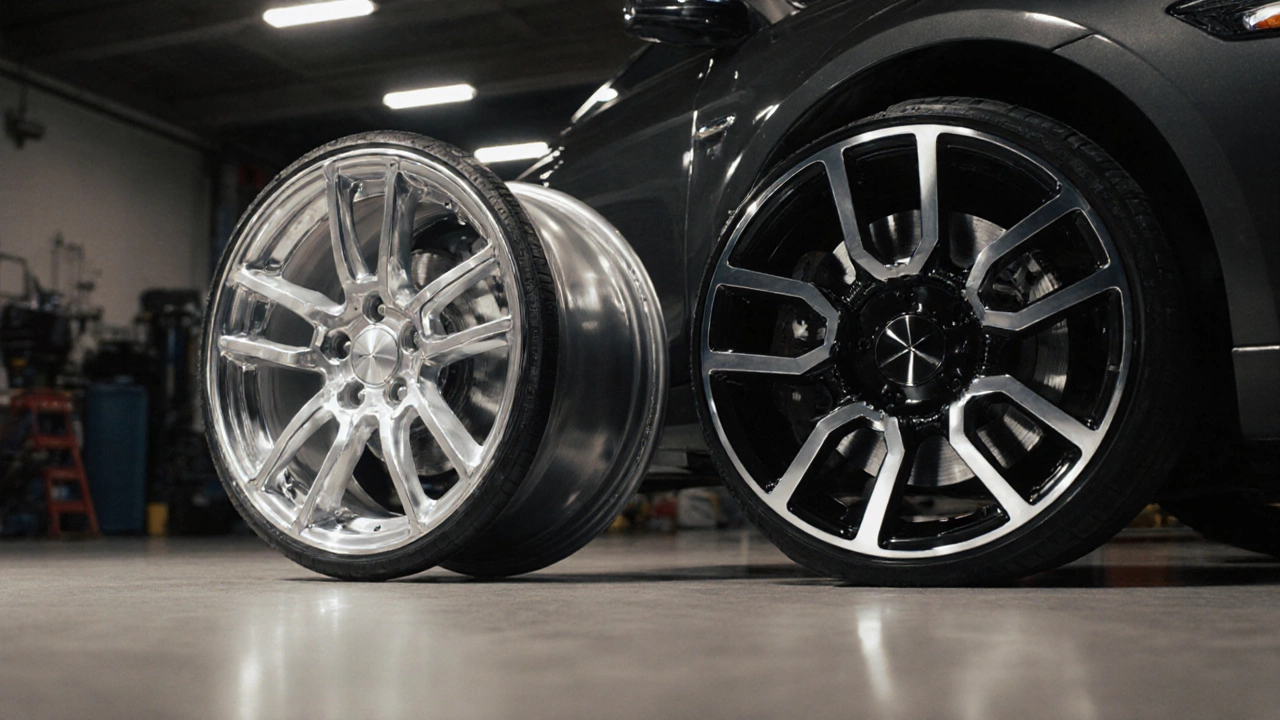When you hear the term wheel weight, the mass of a wheel and tire assembly that rotates with the vehicle. Also known as unsprung mass, it directly influences acceleration, braking, fuel use, and how the car feels on the road. Understanding wheel weight is the first step to making smarter choices about wheel spacers, devices that change the track width of a wheel set, tire wear, how quickly a tyre’s tread degrades, and even the need for a fresh wheel alignment, the adjustment of wheel angles to meet manufacturer specs. In short, wheel weight encompasses the overall dynamics of your ride, requires careful selection of components, and influences fuel efficiency and handling.
Light wheels shave off rotational inertia, which means the engine doesn’t have to work as hard to get the car moving. That translates into quicker launches and better fuel numbers – a win for street racers and commuters alike. Heavy wheels, on the other hand, add to the unsprung mass, making the suspension work harder to keep the tyres in contact with the road. This extra work can lead to increased tire wear, especially on uneven surfaces or during aggressive cornering. The relationship is simple: higher wheel weight → more stress on tyres → faster tread loss. When you install wheel spacers, the offset of the wheel changes, moving the tyre outward, you also affect the lever arm that the suspension has to control. A wider track can improve grip, but it also amplifies the effect of wheel weight on the suspension’s load‑bearing points. That’s why many enthusiasts pair spacers with a proper wheel alignment, to ensure camber, caster and toe stay within safe ranges. Ignoring alignment after adding spacers often results in uneven tyre wear, pulling to one side, and a less predictable feel. Suspension offset is another piece of the puzzle. It’s the distance between the hub mounting surface and the wheel’s centerline. Changing offset alters the wheel’s position relative to the hub and can either mitigate or exacerbate the effects of wheel weight. A lower (more negative) offset pushes the wheel outward, increasing the moment arm and making the car more prone to torque steer if the wheels are heavy. Conversely, a higher offset pulls the wheel inward, which can help keep the unsprung mass’s influence in check, but may compromise stance and clearance. All these elements – wheel weight, spacers, alignment, offset, and tyre wear – are tightly linked in a cause‑and‑effect chain. A lighter wheel reduces unsprung mass, which lessens the load on the suspension, leading to more even tyre wear and better fuel economy. Adding spacers without adjusting alignment or offset can undo those gains by creating new stress points. The takeaway? Treat wheel weight as a central hub and look at the surrounding components as supporting spokes.
Below you’ll find a curated mix of articles that break down each of these connections. From deep dives on how wheel spacers affect tyre wear, to practical guides on checking your alignment after swapping wheels, the collection gives you the know‑how to balance performance, safety, and style. Ready to explore the details? Dive in and discover how tweaking one variable can reshape your entire driving experience.

Discover the pros and cons of aluminum versus alloy wheels, covering weight, strength, cost, corrosion resistance, and brake cooling to help you choose the best fit for your vehicle.